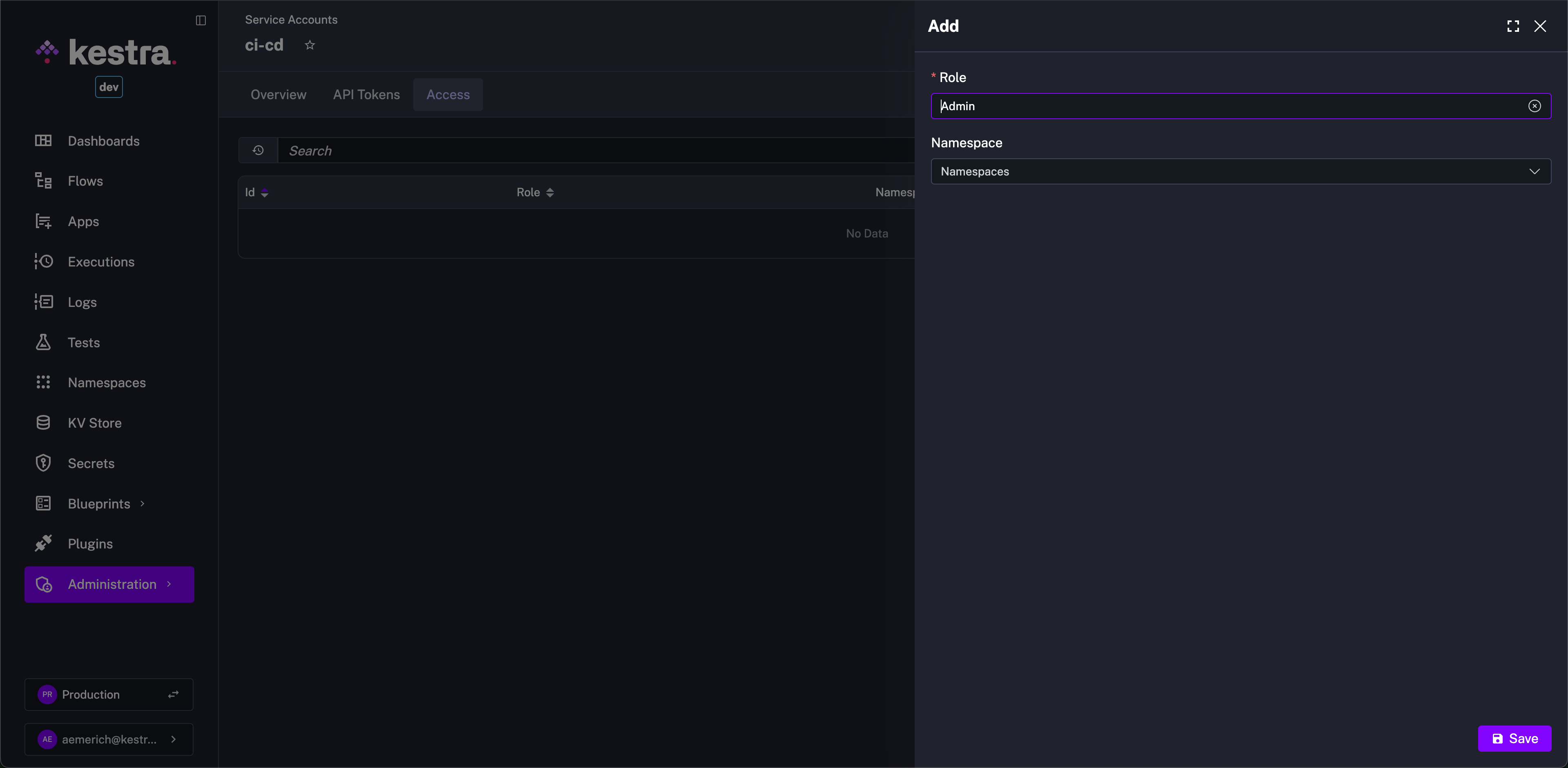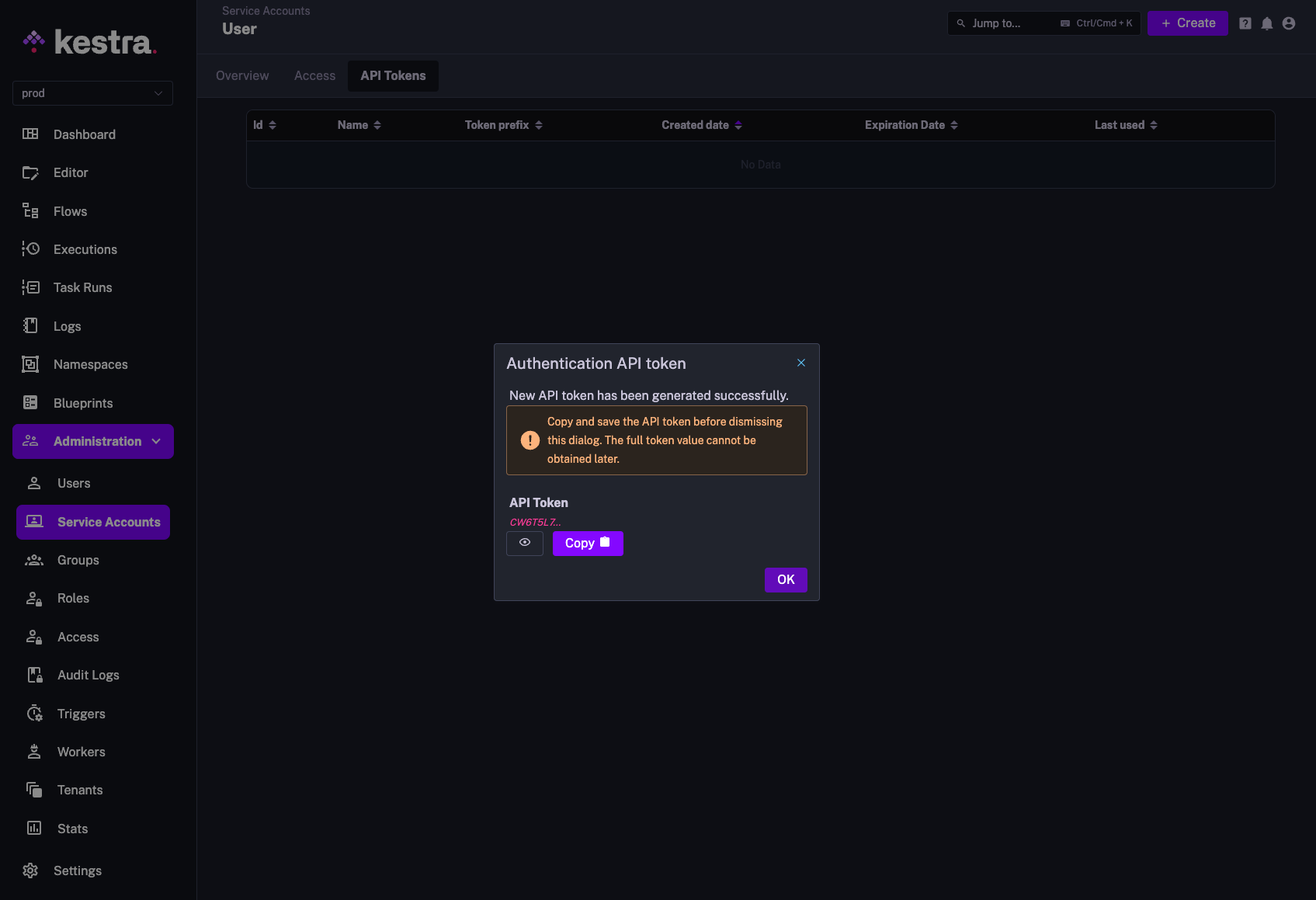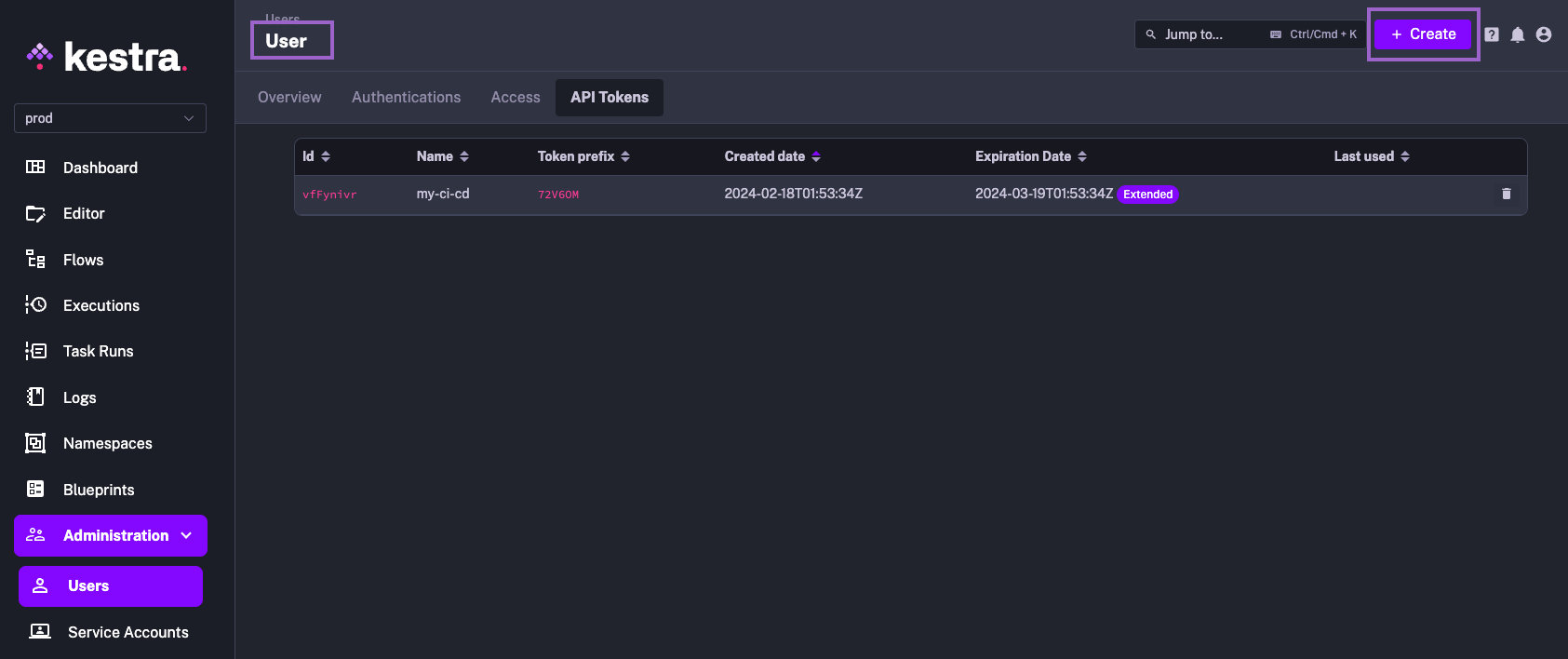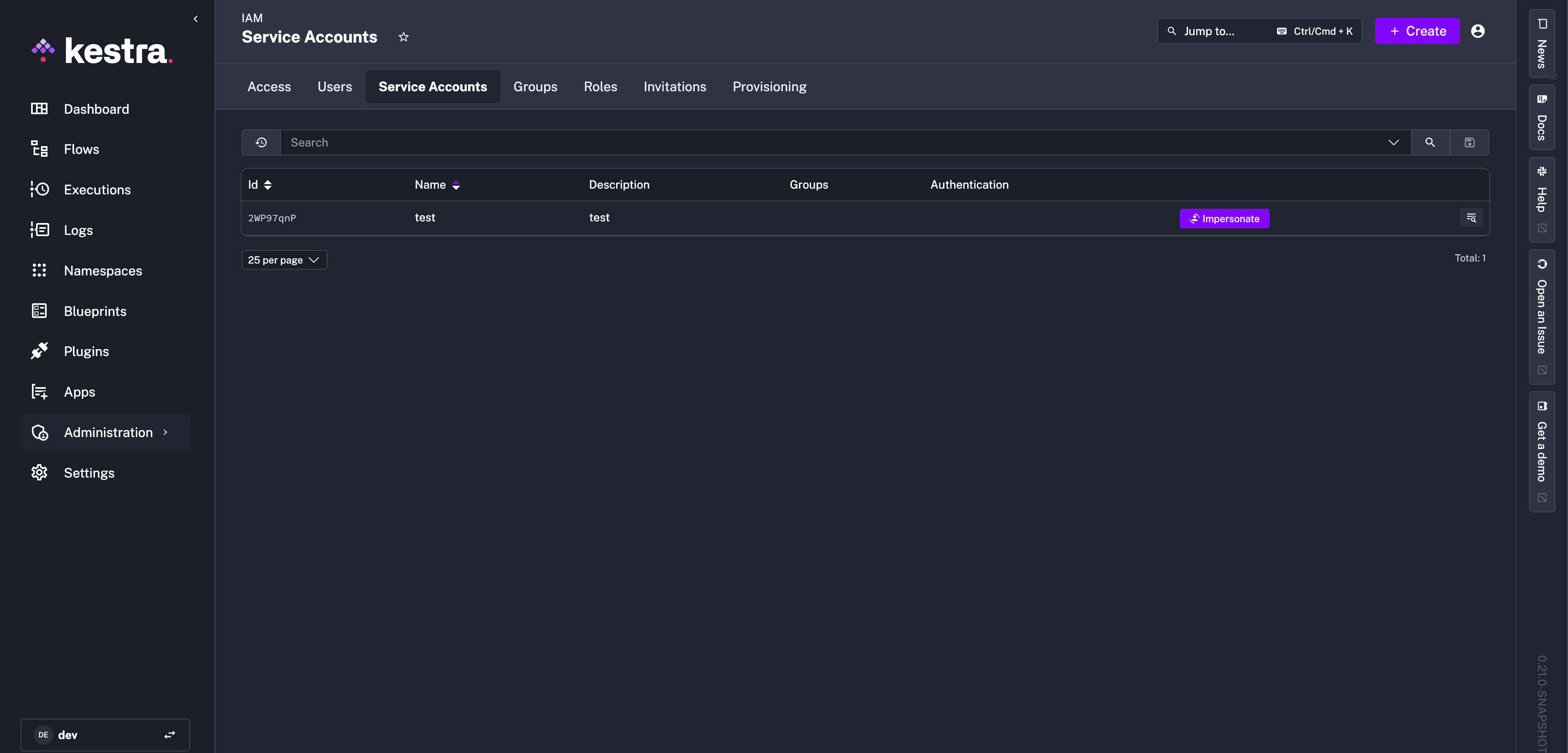 Service Accounts
Service Accounts
Available on: >= 0.15.0
How to create and manage Service Accounts.
A Service Account represents an application that can access Kestra. It is not tied to a specific person and does not have personal information (such as the first name, last name, or email) attached to it. Instead, it only has a name, an optional description, an optional allocation to a group, and a list of Roles that grant it permissions to access specific resources.
Service accounts vs. users
In contrast to regular users, Service Accounts don't have a password and they do not have access to the Kestra UI — they only have a programmatic API access to Kestra. You can think of Service Accounts as bots authenticating with Kestra using an API token.
Creating a Service Account
To create a new service account, go to Service Accounts tab on the IAM page under the Administration section and click the Create button. Fill in the form with the required information, including the name and description and click Save:

Once you have created a service account, you can add a Role that will grant it permissions to specific resources. To do this, switch to the Access tab and click the Add button and select the role you want to assign to the service account.

Finally, you can generate an API token for the service account by clicking the Create button. This will generate a token that you can use to authenticate the service account with Kestra from external applications such as CI/CD pipelines (e.g., in Terraform provider configuration or GitHub Actions secrets).
Note: You can configure the token to expire after a certain period of time or to never expire. Also, there is a toggle called Extended that will automatically prolong the token's expiration date by the specified number of days (Max Age) if the token is actively used. That toggle is disabled by default.
Once you confirm the API token creation via the Generate button, the token will be generated and displayed in the UI. Make sure to copy the token and store it in a secure location as it will not be displayed again.

Users vs. Service Accounts vs. API Tokens
You can create an API token for a regular user as well. While Service Accounts are recommended for programmatic API access to Kestra from CI/CD or other external applications, it's often useful to create an API token for a regular user, so that programmatic actions performed by that user can be tracked and audited.

Therefore, the difference between a service account and a user is that a service account is designed for programmatic access and doesn't have a password or personal information attached to it. Instead, it is authenticated exclusively using an API token. A user, on the other hand, can interact with both the Kestra UI and the API, and can be authenticated using a password or an API token.
The purpose of service accounts
Service Accounts are intended for programmatic access to Kestra from any other application, such as CI/CD pipelines or your own custom APIs. For example, you can use the token to authenticate with Kestra Terraform provider or Kestra's GitHub Actions CI/CD pipeline.
Allocating service accounts to groups
Each Service Account can be attached to one or more Groups such as a group called “Bots” that centrally governs programmatic access for CI/CD across multiple projects with just one Role. This is useful to manage programmatic access used by Terraform, GitHub Actions, or other external applications, in one place by attaching a single Role to that Group.
Speaking of CI/CD, note that Kestra currently supports authenticating with either a basic authentication user or an API token:
- Use the
--api-token=mytokenCLI property to allow authenticating with a service account token:
./kestra namespace files update prod scripts . \
--server=https://demo.kestra.io --api-token yourtoken
- Use the
--user user_email:passwordflag to the CLI to allow authenticating with a Basic Authentication access:
./kestra namespace files update prod scripts . \
--server=https://demo.kestra.io [email protected]:password42
Service account name convention
When creating a new Service Account, make sure to follow the DNS naming convention. Specifically, the name property needs to:
- contain at most 63 characters
- contain only lowercase alphanumeric characters or hyphens (i.e., the
-character) - start with an alphanumeric character
- end with an alphanumeric character.
Some examples to make that clear:
- ✅
my-service-accountis a valid name - ✅
my-service-account-1is a valid name - ❌
MY_SERVICE_ACCOUNTis not a valid name because it contains uppercase characters and underscores - ❌
myServiceAccountis not a valid name because it contains uppercase characters and camel case - ❌
my-service-account-is not a valid name because it ends with a hyphen.
Why do we follow such a restrictive convention? We follow the standard DNS-style pattern to be ready for potential future use cases where we could, for example, forward the service account name to a Kubernetes pod's labels. This way, we ensure that the service account name can be used in a variety of contexts without any issues.
Impersonate service account (admin)
As an Admin of your Kestra environment, you can test the access of Service Accounts with the Impersonate feature.
Impersonate is available through the IAM -> Service Accounts tab. Select any Service Account to impersonate, ensuring permissions and access are correctly implemented across accounts.

Was this page helpful?